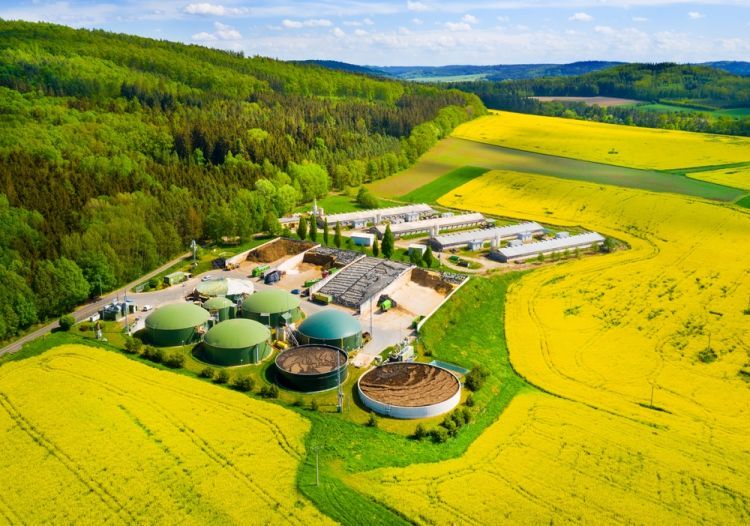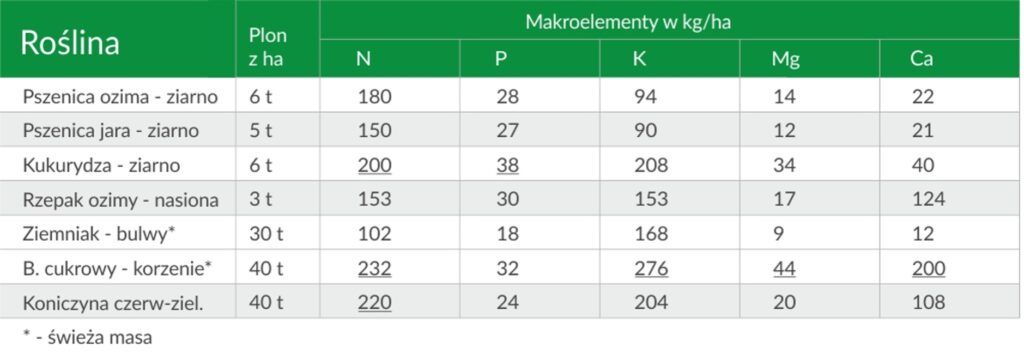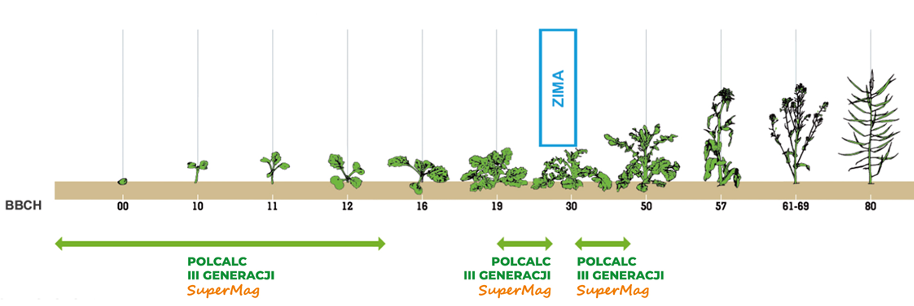
The calcium content in the Earth’s crust is approximately 3.6% of its mass, significantly higher than the content of potassium, magnesium, and phosphorus. This element is the dominant cation both in the soil sorption complex and in the soil solution of arable soils. The amount of calcium reversibly bound by the soil sorption complex is about 60-80% of its total capacity (Wójcik, 1998).
Even on very acidic soils, the degree of saturation of the sorption complex by calcium ions ranges from 10-30% (Barber, 1995; Wójcik, 1998), and liming these soils is one of the most important agronomic practices. This practice contributes to an increase in soil pH as well as being a significant process supplying calcium to plants, especially those with high demands, such as rapeseed. On plantations with calcium deficiency during its flowering period, symptoms such as stem bending just below the inflorescence downwards have been observed, resulting in a wilted appearance. It has also been demonstrated that rapeseed, to produces 3 tons of seeds along with the by-product yield, absorbs from the soil about 124 kg of Ca·ha-1, which is only slightly less than potassium (153 kg K·ha-1) and several times more than phosphorus, the uptake of which is around 30 kg P·ha-1 (Table 1).
Numerous studies have shown that winter rapeseed is particularly sensitive to acidic soil conditions, which result in poor root development. Deformation of the root growth cones and death of root hairs occur due to the action of free aluminum ions. Therefore, rapeseed should be grown on good soils, at least medium with a pH of 6.0, and heavy with a pH of 7.1. The appropriate soil pH enables the plant to develop a strong root system, providing greater winter hardiness and resistance to drought and diseases. A well-developed root system of rapeseed ensures its adequate supply of nitrogen, phosphorus, potassium, magnesium, and other essential nutrients.
On soils with a pH below 5.7, even very high mineral fertilization will not meet the rapeseed’s nutritional needs because the applied nutrients will become ineffective. Calcium fertilizers should already be applied before the planned rapeseed cultivation, during the pre-crop period. However, if soil liming has not been done during this period, powdered lime such as Kujawit or Radkowit (carbonate lime with magnesium) can be applied immediately after harvesting the previous crop and mixed with the soil to a depth of 15-20 cm. If the soil pH still deviates from the optimal level despite liming, granular carbonate lime should be applied to rapeseed topically, such as Polcalc III Generation, at a dose of about 500 kg∙ha-1 to 1000 kg∙ha-1, but no later than the end of the first decade of November. However, if soil pH is below 6.0 and magnesium content is low, granular magnesium lime should be used, such as SuperMag or Polcalc Magnesium Plus, at a dose of about 500 kg∙ha-1 to 1000 kg∙ha-1.
Liming can be done in winter or early spring, but this practice should be used as an emergency measure and as a last resort, serving to salvage the yield. Winter liming extends the contact time of lime with the soil, and heavy spreading equipment does not excessively compact the soil or damage its structure. However, this practice can only be carried out on flat fields without spring runoff. During winter and early spring, granular carbonate lime should be used – Polcalc III Generation. Winter liming will not dramatically increase soil pH, but this fertilizer will be a good source of calcium necessary for the proper growth and development of rapeseed.
Exceptionally, in spring, when soil pH is acidic, or when clear symptoms of calcium deficiency in rapeseed are observed (inhibited growth, weak root development of rapeseed), topically applying granular carbonate lime such as Polcalc III Generation at a dose of about 500 kg∙ha-1 to 1000 kg∙ha-1, no later than 3 weeks before the start of vegetation, but no later than the end of the first decade of February (Fig. 1). Proper liming of rapeseed grown on soils with improper pH increases seed yield by 10-20%. Taking into account the current rapeseed seed purchase prices as of August 14, 2023, liming will increase the profitability of this cultivation by 609-1218 zł·ha-1.
Granular carbonate lime Polcalc III Generation and SuperMag, as well as powdered lime such as Kujawit and Radkowit, are available from our distributors throughout Poland. For information on the nearest distributor, please contact us by phone at 880-880-801 or use the search engine on our website.








